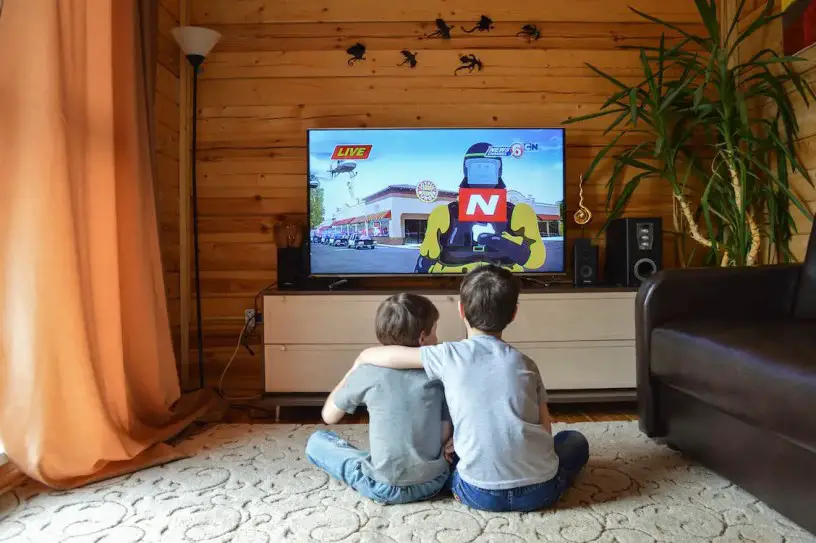By Phillip Swann
The TV Answer Man –@tvanswerman
Former Sony employee. More than 30 years as a TV journalist.
TV Answer Man, do you have any tips on how to save money on buying a TV for Black Friday? — Verna, Reno, Nevada.
 Verna, buying a new TV is a big decision and not one to be taken lightly. Depending upon which set you buy — and where and when you buy it — you might wind up spending hundreds of dollars more than you need to. So, here are five ideas on how to save money while buying a new television whether it’s during a Black Friday sale, or any other time.
Verna, buying a new TV is a big decision and not one to be taken lightly. Depending upon which set you buy — and where and when you buy it — you might wind up spending hundreds of dollars more than you need to. So, here are five ideas on how to save money while buying a new television whether it’s during a Black Friday sale, or any other time.
1. Buy Last Year’s Model
Many TV makers next spring will begin rolling out their 2024 model sets which they say include the latest in new TV technologies. However, the difference in technology between a new model set and the previous year’s model is often very little. But the difference in price can be quite great, perhaps $300-500 on comparably sized TVs. If you can wait until early next year, you might find some serious bargains on older TVs which are just as good as the new sets. But if you can’t wait, see if your store is now carrying some 2022 models. If so, there could be some excellent discounts there because both TV makers and retailers are anxious to clear their shelves to make room for newer sets.
2. Do Some Comparison Shopping
Before going to the store, make a list of 5-7 TVs that you are most interested in. Check out their reviews at some respected web sites such as CNET.com, and then visit sites such as Amazon.com to see their online prices. Then when you go to the store, you can compare a favored TV’s retail price with the online price. You might find a significant difference. If so, act accordingly.
3. Try to Wait For Big Store Sales
As you note, retail stores will offer discounts on select TVs during the Black Friday sale. (This also happens on other special occasions such as Super Bowl week, Christmas, school graduation week, and the start of the NFL season.) However, take note that some stores will discount a relatively small number of TVs to lure people in and then try to get them to buy more expensive models when they get there. (They also may carry a limited number of the discounted TVs.) You might find a Black Friday deal but your odds might be better if you wait until the store offers a wider sale with more selections at another time.
4. If You’re Buying a Small TV, Go With the Unknown Brand Name
I recommend that people almost always choose a well-respected brand name when buying a new TV. When you are spending hundreds of dollars (or more) on a new product, you want to make sure it’s a top-quality product, offering a great picture and sound. And over the years, companies such as Sony, Samsung, and LG have earned their reputations for making exceptional TVs. However, there is one exception to this rule: If you are buying a less-expensive, small-screen TV, such as a 32-inch model, check out the prices on the unknown-brand models. The difference in picture quality on a 32-inch TV is minimal whether it’s a name brand or little-known brand. The reason is that because the screen is smaller, you really can’t tell much difference in the picture regardless of the technology used for the display. (This is not the case for bigger-screen TVs; the bigger the screen, the more obvious it becomes that the company making it took the time and money to do it right.) So if you find a unknown brand 32-inch TV for $99 compared to the $149 for the known brand, don’t be afraid to go with the former.
5. Don’t Buy an Extended Warranty Or Expensive Cables
For years, electronics stores have boosted their profits by selling extended warranties to TV shoppers, sometimes using fear tactics to make people think their sets will fall apart the day after the manufacturer’s warranty expires. But nearly every TV set comes with a one-year warranty on parts and a multiple-month warranty on labor. If the set is a lemon — ready to collapse into a thousand pieces with a single touch — you’ll find out shortly after you bring it home. And if that happens, your manufacturer’s warranty will cover any repairs. Plus, some credit cards will extend a product’s warranty for an extra year for free. Check with your credit card company before buying a store’s extended warranty.
And, finally, TVs, even today’s sleeker flat-screen sets, are built to last. The number of sets that need repairs in the first few years are estimated to be around five percent. That’s not a high number. And, as we just noted, if your set does need a repair in the first year or two, it’s likely it will be covered by your manufacturer’s warranty plus your credit card’s warranty extension.
It’s also important to note that you should never buy expensive HDMI cables after you purchase the TV. The technology in TV cables is almost identical; one does not offer a better picture than another. So you can buy one under $20 without fear it will be ineffective, despite what the salesperson may say.
Verna, hopes that helps. Happy viewing and stay safe!
Have a question about new TV technologies? Send it to The TV Answer Man at swann@tvanswerman.com Please include your first name and hometown in your message.
The TV Answer Man is veteran journalist Phillip Swann who has covered the TV technology scene for more than three decades. He will report on the latest news and answer your questions regarding new devices and services that are changing the way you watch television. See the bio for Phillip Swann here.

